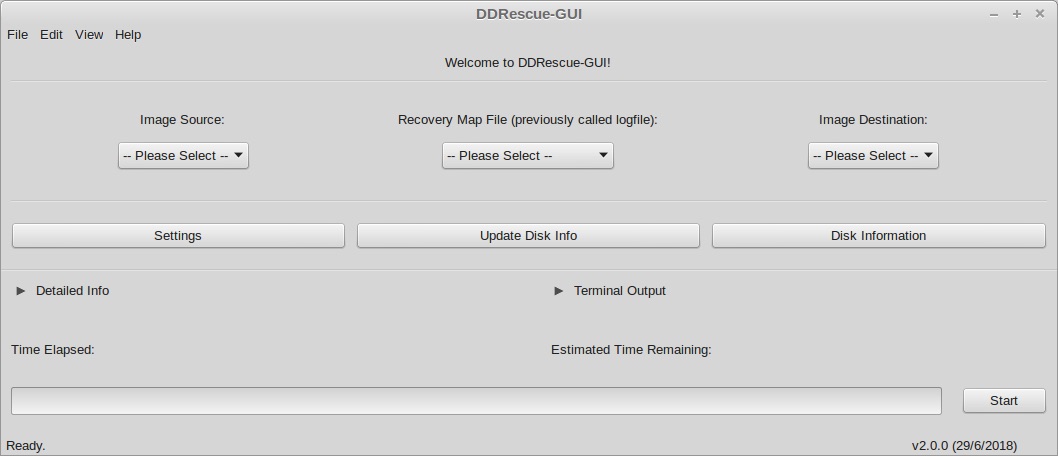

d tells ddrescue to use direct disk access and ignore the kernel's cache The syntax for the command we are going to use is: Make sure you are located in the directory where you intend to store the image in File Manager and select “ File->Terminal”, and a new terminal window should open with the directory you have chosen as the working directory.
DDRESCUE GUI MAC FREE
If you are rescuing a 500gb drive, you must have at least 500gb free to store the image. Make sure the drive you plan to store the image on has sufficient capacity. Note: Do not mount/browse the drive you are trying to rescue. In this example, I will be storing the image in the root directory of the USB drive. The first thing to do is to open the “File Manager” from the Parted Magic desktop and browse (and/or create) the directory on your USB drive that you intend to store the image and the logfile on. In this example, we are going to image the whole Windows8 drive in the laptop to an image file stored on the attached USB hard drive. Be aware, that if you have multiple drives installed, it is possible that these designations can change after a reboot so be sure to double check before you proceed. dev/sdb, which is my attached USB drive and contains a single partition: /dev/sdb1Īt this point you will want to make note of the name of the drive or partition that you want to rescue, and the name of the drive where you want to store the image. This is the Windows8 drive installed in the laptop.Ģ. dev/sda, which contains two partitions: /dev/sda1 and /dev/sda2. If you want to see a list of the block devices currently attached to your system, run this command:Īs you can see, there are two hard disks attached:ġ. If, on the other hand, you intend to rescue the whole drive, replace the failing drive, and re-image then certainly image the whole drive so you get the MBR, etc.
DDRESCUE GUI MAC WINDOWS
If you just need to recover files from a Windows partition, it is advisable to only image that particular partition (as opposed to the entire disk). Or, we may just need to image a single partition (say /dev/sda2). For instance, /dev/sda1 is the first partition on the first hardrive, /dev/sda2 the second partition on the first drive, and so on.įor our purposes, this is relevant because we may want to image the complete drive (say /dev/sda), which includes everything (MBR, partition table, all partitions). Furthermore, the partitions on a particular drive are represented by incremental numbers. So, the first recognized device will be /dev/sda, the second will be /dev/sdb and so on.

Hard drives are usually denoted with the “sd” prefix, followed by an incremental alphabetical designation, beginning with “a”. These devices are represented as files within the /dev directory.

Part 1 – Creating an Image from a Failing Diskįirstly, a refresher on how unix/linux names block devices (hard drives, usb drives, cdroms, etc).


 0 kommentar(er)
0 kommentar(er)
